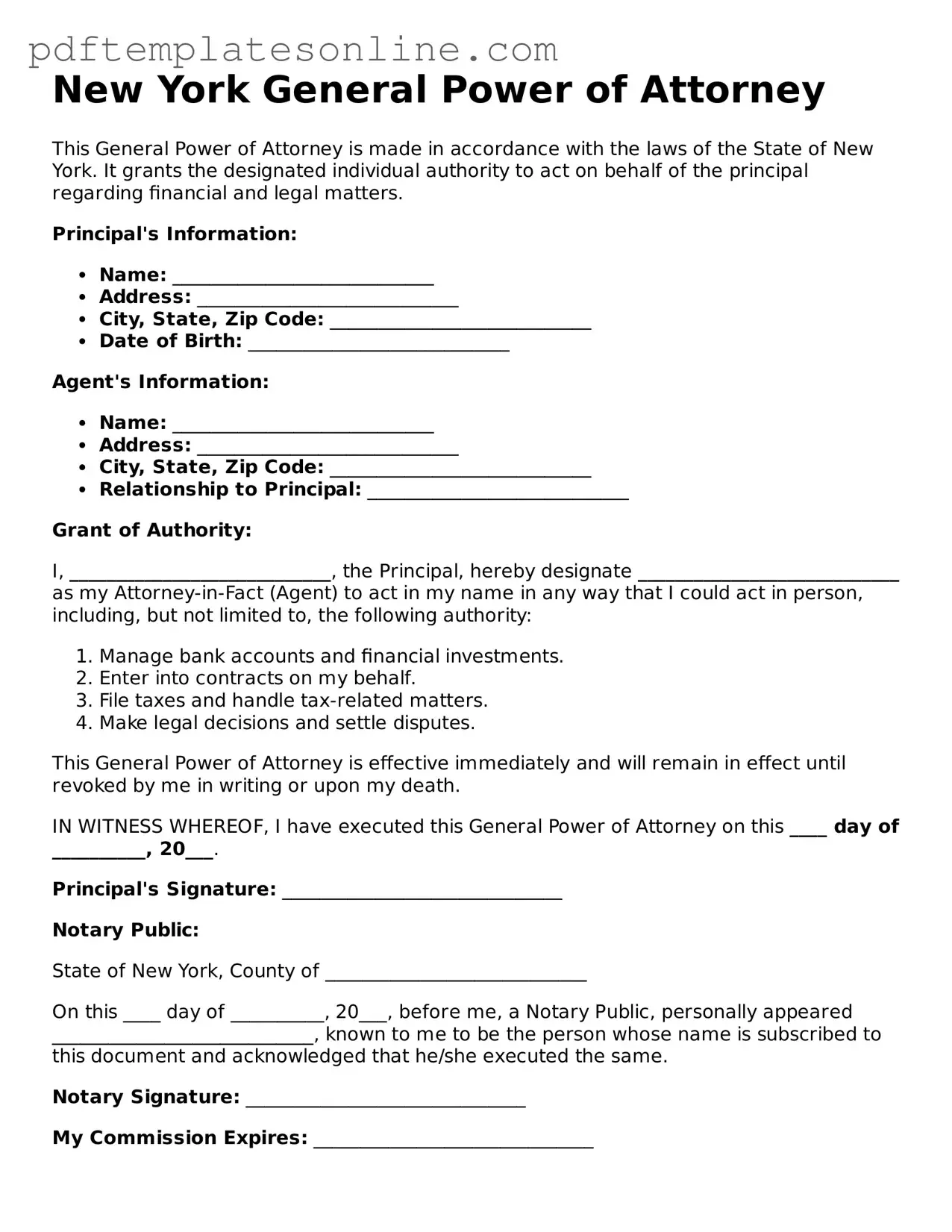Filling out a New York General Power of Attorney form can be a straightforward process, but many people make common mistakes that can lead to complications. One frequent error is not specifying the powers granted. The form allows for a broad range of authority, from managing finances to making healthcare decisions. If the powers are not clearly outlined, it can create confusion or disputes down the line.
Another common mistake is failing to date the document. A General Power of Attorney is only valid if it is properly executed, and dating the form is a crucial part of that process. Without a date, it may be difficult to determine when the authority was granted, which can lead to challenges regarding its validity.
People also often overlook the importance of signing the form in the presence of a notary public. New York law requires that the General Power of Attorney be notarized to be legally binding. Skipping this step can render the document ineffective, leaving the principal without the intended legal protections.
Additionally, individuals sometimes forget to inform their agents about the powers they hold. It is vital for the agent to understand their responsibilities and the extent of their authority. Without this communication, the agent may not act in the best interest of the principal or may hesitate to make necessary decisions.
Another mistake is neglecting to keep a copy of the completed form. Once the General Power of Attorney is filled out and executed, it is important to retain a copy for personal records. This ensures that both the principal and the agent have access to the document when needed, preventing misunderstandings.
Lastly, people may not consider the implications of choosing the wrong agent. Selecting someone who is trustworthy and capable is crucial, as this person will have significant control over important decisions. Taking the time to evaluate potential agents can prevent future issues and ensure that the principal's wishes are honored.
